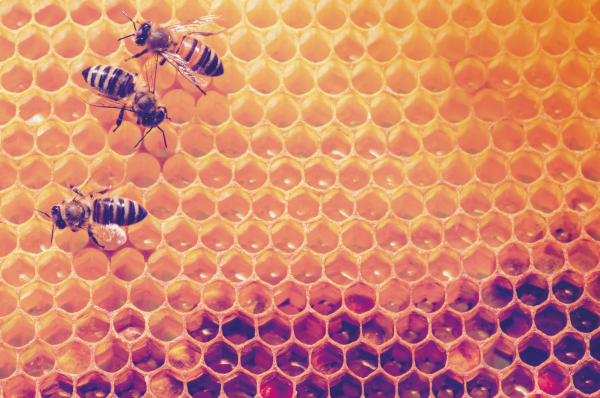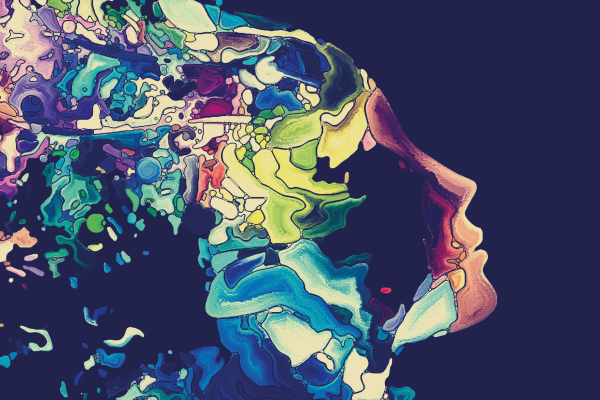No, I’m not gay
No, I’m not straight,
And I’m sure as hell not bisexual, dammit, I am whatever I am when I am it
Andrea Gibson 1
I don’t relate to being boy or girl, and I don’t have to have my partner relate to boy or girl
Miley Cyrus 2
We are witnessing a sea change in how teenagers and young adults are experiencing their sexuality and gender identity. In a 2015 YouGov survey, half (49%) of young people aged 18–24 said they did not see themselves as 100 per cent heterosexual.3 What we are seeing in the UK are large, and growing, numbers of young people who are comfortable with at least some same-sex desire in their sexual and romantic fantasises and behaviour. Comparable, American research has crowned these ‘mostly straight’ – or arguably bisexual – young people as making up the largest sexual minority group in their age range: they are more open to relationships with people across the gender and sexuality spectrum and are busy critiquing and rejecting identities that emerged from the 1970s and 80s, especially binary notions of ‘gay’ and ‘straight’.4
In parallel with these changes, there has been an explosion in gender identities, with ‘trans’ – an inclusive umbrella term for gender difference – becoming mainstream, and the emergence of ‘non-binary’ – meaning ‘any gender that is not exclusively male or female’, reflecting wider societal patterns in which people are owning parts of themselves that are the other, both or neither genders.5
Part of the challenge to conventional lesbian, gay, bisexual, trans and queer (LGBTQ) labels has come from young people being able to find a wide range of uncensored information about sexuality and gender, mainly via the internet and social media but also through networks, campaigns, literature, blogs, popular culture and friends. The recent emergence of out, mainly LGB, role models in traditionally more macho arenas – rugby, boxing, American football, athletics and hip-hop – alongside the positive coverage of trans role models such as Laverne Cox, Janet Mock and Paris Lees, have inspired young people. Celebrities using social media, including Angel Haze, Olly Alexander, Miley Cyrus, Lady Gaga and Ruby Rose, also act as cultural cheerleaders, magnifying information about sexual and gender fluidity and non-binary identities.
In the past decade we have also seen the increasing visibility of people who experience their sexuality as ‘asexual’. This development, according to academic Dr Meg-John Barker, offers welcome relief within a culture pushing sex as compulsory, permitting space to relax within a spectrum of sexual desire, or none at all. As Barker notes: ‘…if your sexual desire fluctuates over time or you just don’t have much sexual attraction, that’s not a problem; it’s nothing to be worried about’.5
As practising counsellors working with students, some of us will have already sensed a shift away from mainstream labels – which can be seen as too sexualised (‘bisexual’), too narrow (‘heterosexual’), too political (‘queer’), too clinical (‘lesbian’) or too associated with negativity and weirdness (‘gay’) – to newer identities based on a more relaxed attitude to sexuality and gender.4 While, outside of contemporary Western culture, many societies have historically acknowledged and celebrated gender and sexual diversity,6 the UK is fast playing catch-up. Young people growing up here are inventing and embracing labels that reflect their fantasies, experiences and an internal sense of themselves, while some are rejecting all identities as inherently inadequate and restrictive.
Nowhere is this change clearer than in relationships. So-called ‘intentional’ relationship styles have now moved beyond the traditional notions of swinging, monogamy and open relationships into a complex, growing menu of choices for intimacy. For example, young people are being drawn to ‘polyamory’ or ‘poly’ (having ‘simultaneous multiple love/romantic relationships with the knowledge and consent of all concerned’),7 including ‘relationship anarchy’ (‘deliberate non- possessive style of relationship, a more explicitly political version of polyamory’),7 the ‘new monogamy’ (‘a form of monogamy that is somewhat open to other sexual/emotional connections’),7 and ‘fuck buddies’ (people ‘who have a friendship and who have sex together, but who are not romantically attached’).5,7
In the midst of such fast-paced change, it could be easy to lose sight of the ongoing struggles that LGBTQ young people still face, especially those who belong to racial and other minority communities. While many of today’s students have grown up within more accepting cultures, LGBTQ students are still more likely to drop out or take time out of study – including half of all trans students – while homo-, bi- and transphobic abuse and harassment remain a persistent problem for young people.8,9 Thankfully, most LGBTQ young people do go on to lead satisfying, ordinary lives, yet in the therapy room we can find ourselves supporting clients acting out from a place of trauma, shame, guilt and other unprocessed, internalised beliefs connected to historic and ongoing hostility towards their gender and/or sexual identities.
It is important to recognise that, from a young age, LGBTQ people often have to develop sophisticated coping strategies to avoid and minimise the impact of hatred and rejection. Often subject to significant unconscious or conscious pressure from their families, friends and wider communities to be straight and stereotypically male or female, LGBTQ young people can repress who they are and construct what Winnicott described as a ‘false self’ to ‘protect the real self from pain’.10, 11
Adaptive strategies adopted by LGBTQ children can become destructive in later life, while others can actually help to build resilience in adolescence and adulthood. This can be seen in LGBTQ young people who are practising ‘visibility management’, where they are very careful about where, when and to whom they are out, monitoring what they say, their body language and even dating someone to ‘pass’ as straight.12 Such management can be particularly useful, and necessary, for many black and minority ethnic young people and those from conservative religious communities: it allows young people to be ‘out’ when they can, while keeping them safe.
In short, as Darla Linville observes, young people are ‘in the process of making spaces safe for themselves, while demanding the opportunity to do desire the way they want’.13 So how does this affect what LGBTQ young people want from therapy? The largest UK study found that a non-judgmental, supportive approach from the therapist was the biggest factor for LGBTQ young people in forging a successful working alliance.8
Using this as a starting point, I have developed 10 recommendations for therapists working with young people. These insights have been informed by interviews I conducted in January 2017 with counsellors (Kim Davies14 and Amy Walters15); psychotherapists (Meg-John Barker5 and Lara Smith16); a psychiatrist who contributed anonymously; an academic (Natacha Kennedy17); and a trans and non-binary youth worker (Finn Greig18).
1 Examine your sexual and gender identity and relationship style: as Lara Smith, a psychosexual therapist and a young people’s counsellor working in a secondary school, reminds us: ‘…don’t underestimate the unconscious’. Lara advocates for therapists to have enough personal therapy so that we are aware of assumptions and judgments about our own gender and sexual identity, underpinned by supervision from an experienced supervisor who understands LGBTQ work.16
2 Proactively educate yourself about LGBTQ issues: no matter how good our therapy training has been, most courses still have little or no positive LGBTQ content. The dilemma, as Kim Davies, a counsellor practising in Milton Keynes, points out, is that, although ‘we are always learning from our clients… [we must] …make sure we are not relying on them to teach us’.14 As such, we have an ethical responsibility to seek out specialist training and resources – as listed at the end of this article – to relieve the burden from young LGBTQ clients of educating their therapists. For example, sharing this article with other therapists and professionals would be an excellent way to encourage debate.
3 Be open and know your limits: building on the first two recommendations, you can then be more transparent with clients about what you do and don’t know about gender, sexual identities and relationship styles. If you still feel that you are not the best fit for an LGBTQ client, make sure you have developed networks with therapists and LGBTQ-specific and -friendly services so you can safely refer on.
4 Be an LGBTQ affirmative therapist: have materials that signal your support for LGBTQ young people in your waiting area, such as leaf lets, posters and magazines. Ensure any forms you use are thoughtful about sexuality and gender identity questions – ideally having a blank space for the client to decide for themselves. Check out their preferred pronoun: don’t assume that ‘he’ or ‘she’ is appropriate – clients may want you to use ‘they’ or another pronoun.
5 Allow for certainty and uncertainty, exploring what these mean for the individual client in the here and now: for example, Amy Walters, a counsellor working in Wiltshire, argues for the importance of giving trans young people: ‘…permission to go on this journey without knowing the answers at the beginning’.15 It is still a big deal for a young person to feel able to safely explore their gender and sexual identity without being subject to guilt or shame.
6 Support young people’s feelings in response to anti-LGBTQ prejudice: Lara Smith encourages therapists to ‘normalise feelings’ in the face of widespread prejudice. When a student has been abused and is angry about it, saying something like, ‘that would make quite a lot of people angry’, to empathise, is supportive, rather than appearing to question what is really healthy rage against bigotry.16
7 Focusing on gender and sexual identity can be a red herring: young people report that therapists can too often link difficulties back to their LGBTQ identity. The danger here is that these young people – who may already be extra-sensitive to not being accepted and have split off parts of their identities to stay safe – may then avoid talking about their gender and sexual identity, even when they need to. Finn Greig, Lead Youth Worker at Gendered Intelligence, says this is a common experience for trans and non-binary young people, who often report that even when they have many other important issues to talk about – such as exam stress, diagnoses or problems with relationships or school – therapists spend a disproportionate amount of time on their trans identity.18
8 Be focused on what is happening for the client: therapists highlighted several unhelpful reactions to LGBTQ young people coming out. Kim Davies spoke of professionals saying clients were ‘too young to have formed an identity’ when in fact [they had] …quite positively formed an identity’,14 while Lara Smith asserted that therapists should never say ‘perhaps it’s a phase’ or ‘are you sure?’ because ‘it might be an exploratory phase in [their] life; it may not; but it doesn’t really matter; that is where [they] are at’.16
9 That said, making mistakes often helps the therapy: you will probably get someone’s pronoun wrong at some point or have to correct a wrong assumption about someone’s sexuality or gender. Don’t beat yourself up, because acknowledging your mistakes or ignorance can open up opportunities to find out more about what their life is like, for you to say to them, as Meg-John Barker suggests: ‘I’m not perfect, I’m really sorry I messed it up’ or just ‘I don’t know; how would you like me to refer to you?’ and thus provide what can be a meaningful, reparative experience.5
10 Therapy with LGBTQ young people can be hugely rewarding: Amy Walters describes the ‘real honour’ she feels working with young people for whom therapy – and the coming out it often involves – can be ‘terrifying’ and yet at the same time ‘hugely empowering… at different points in their journey’.15 Authenticity is the key; otherwise, as Lara Smith warns: ‘If you are not genuine, if you are not congruent, [young people] will sniff you out a mile away’.16
A positive experience of therapy can support young people to explore and accept who they are, deal with the challenges life throws at them and make healthier choices. Such relational, therapeutic work with young LGBTQ and non-binary clients also offers much for us, as therapists, to reflect on and learn from. Set against the pain that any one of us can experience in the face of rigid gender stereotypes, Lara Smith provides an inspiring reality check for our work and our lives: ‘We don’t have to fit a certain way of being – who wrote those rules? Where did they come from? We don’t have to live like that. We can be the people we are’.16
Neil Young is an integrative arts psychotherapist training at the Institute for Arts and Therapy in Education. He has 20 years’ experience as a trainer and queer community advocate, founding Mosaic LGBT Youth Centre in north-west London and working as an LGBT advisor for the first two Mayors of London. Watch the Pink Therapy conference presentation that inspired this article.
More from University and College Counselling

'Get out, stay out.' A careers mentoring scheme for lesbian, gay, bisexual and transgender (LGBT) students
Open article: Sean Russell highlights the benefits of a mentoring scheme for LGBT students at the University of Birmingham. University and College Counselling, May 2017

What could they be thinking? Understanding the adolescent brain
Open article: Michael Nagel explores the impact of brain maturation on emerging adult emotion and behaviour, highlighting the importance of awareness of this process on delivering effective therapeutic services. University and College Counselling, March 2017

Being mindful of mindfulness in higher education
Open article: Catherine Wikholm and Miguel Farias examine potential drawbacks to the growth of mindfulness as a standard mental health offering within educational settings. University and College Counselling, November 2016
References
1. Gibson A. Andrew, from ‘when the bough breaks’ [CD]. Self-published; 2006.
2. Cyrus M. ‘I don’t relate to being boy or girl’. The Guardian 2015; 10 June. https://www.theguardian.com/music/ 2015/jun/10/miley-cyrus-i-dont-relate-to-being-boy-or-girl (accessed 19 February 2017).
3. Dahlgreen W. 1 in 2 young people say they are not 100 per cent heterosexual. YouGov. https://yougov.co.uk/news/2015/08/16/ half-young-not-heterosexual (accessed 19 February 2017).
4. Savin-Williams RC. The new sexual minority teenager: freedom from traditional notions of sexual identity.
In: Kaufman JS, Powell DA (eds). The meaning of sexual identity in the twenty-first century. Newcastle upon Tyne: Cambridge Scholars Publishing; 2014.
5. Barker M-J. Interview. 4 January 2017.
6. Trently D. 10 examples of nonbinary genders throughout history. http://listverse.com/2015/10/21/10- examples-of-nonbinary-genders-throughout-history (accessed 5 March 2017).
7. Barker M-J, Richards C. Sexuality and gender for mental health professionals: a practical guide. Sage: London; 2013.
8. METRO. Youth Chances. 2014
9. National Union of Students (NUS). Education beyond the straight and narrow: LGBT students’ experiences in higher education. London; NUS; 2014.
10. Winnicott DW. The maturational processes and the facilitating environment. Madison, WI: International Universities Press; 1965.
11. Rowan J. The reality game: a guide to humanistic counselling and psychotherapy. London: Routledge; 1998.
12. Lasser J. Tharinger D. Visibility management in school and beyond: a qualitative study of gay, lesbian, bisexual youth. Journal of Adolescence 2003; 26(2): 233–44. In Clarke V, Ellis SJ, Peel E, Riggs DW. Lesbian gay bisexual trans & queer psychology: an introduction. Cambridge: Cambridge University Press; 2010.
13. Linville D. Resisting regulation: LGBTQ teens and discourses of sexuality and gender in high schools. New York: City University of New York; 2009. http://academicworks.cuny.edu/cgi/ viewcontent.cgi?article=2428&context=gc_etds
(accessed 19 February 2017).
14. Davies K. Interview. 14 January 2017.
15. Walters A. Interview. 8 January 2017.
16. Smith L. Interview. 14 and 15 January 2017.
17. Kennedy N. Interview. 15 January 2017.
18. Greig F. Interview. 21 January 2017.
Resources
Gendered intelligence: offers training on working with trans and gender variant young people; runs youth groups; and its ‘Knowledge is Power’ section is for and by young trans people: http://genderedintelligence.co.uk
Pink Therapy: therapy organisation working with gender and sexual diversity clients in the UK; therapist database and CPD training programme: http://pinktherapy.mobi and YouTube channel: https://www.youtube.com/user/ pinktherapyuk
Brook: https://www.brook.org.uk/our-work/training- on-gender-and-sexuality
Bish: ‘A guide to sex, love and you’ for young people aged 14 plus. http://www.bishuk.com
Further reading
Barker M-J, Richards C. Sexuality and gender for mental health professionals: a practical guide. London: Sage; 2013. Practical advice and an excellent glossary.
Borstein K. My new gender workbook (2nd edition). London: Routledge; 2013. For use with clients exploring their gender identity.
Acknowledgements
Thanks to Dr Meg-John Barker, Kim Davies, Natacha Kennedy, Finn Greig, Lara Smith and Amy Walters for their thoughtful, grounded ideas. Also to Jane Czyzselska, Paul Harris, David Mair, JC Niala, Dr Madura Rasaratnam, and my partner Edmund for feedback on an earlier draft.
